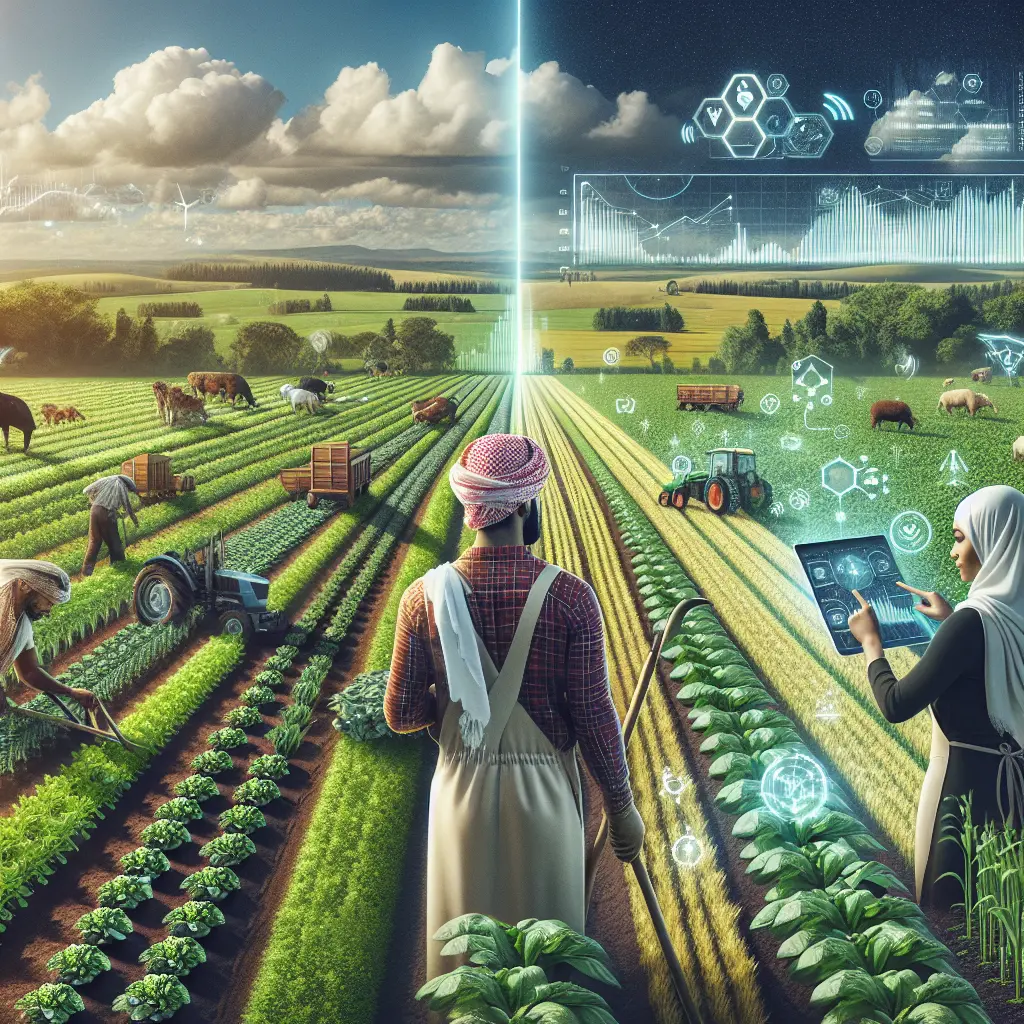
Digital Twins: A Game-Changer in Modern Agriculture
In an era where agricultural technology is evolving rapidly, digital twins are emerging as a transformative force driving innovation in agriculture. As farmers and agribusinesses strive for more sustainable practices, these cutting-edge solutions create virtual replicas of physical farm environments. Digital farming tools are revolutionizing smart agriculture by enabling precision farming and real-time farm analytics, paving the way for data-driven decisions that boost productivity and efficiency.
The Role of Digital Twins in Precision Farming
Digital twins facilitate precision farming by offering detailed, real-time insights into various farm operations. This integration of IoT and smart sensors allows farmers to monitor crop health, soil conditions, and weather patterns with heightened accuracy. According to a recent study on precision farming, farms employing digital twins have seen a 20% increase in yield efficiency due to optimized resource allocation.
Predictive analytics further enhance this process by anticipating challenges such as pest infestations or nutrient deficiencies, enabling farmers to take proactive measures and contribute to sustainable agriculture practices.
Real-Time Farm Analytics for Enhanced Management
Real-time farm analytics, powered by digital twins, provide actionable insights that revolutionize farm management. For instance, Siemens' digital twin for music illustrates how this technology transforms complex systems into easily interpretable models. Similarly, in agriculture, these models help farmers understand farm dynamics, facilitating informed decision-making.
With this data at their fingertips, farmers can make strategic adjustments to irrigation schedules, pesticide applications, and planting timelines. This approach not only optimizes current operations but also supports long-term planning and risk management—essential aspects of the ongoing digital transformation in agriculture.
Innovations Beyond Agriculture: Cross-Industry Lessons
Lessons from Other Industries
Digital twins extend beyond agriculture, offering valuable lessons from other sectors. In archaeology, digital twins enhance excavation processes by creating detailed site models (source). The manufacturing industry also uses digital twins to address complex supply chain challenges (source). These examples underscore the adaptability of digital twins in diverse domains.
Integrating Agri-Tech Innovations for Sustainability
Sustainable Agriculture Through Technology
Digital twins represent a convergence of agri-tech innovations like IoT and smart sensors, enabling comprehensive crop monitoring crucial for sustainable agriculture. By leveraging these technologies, farmers can optimize water usage, reduce chemical inputs, and minimize environmental impact.
A 2024 report on digital twins' impact highlights that farms using digital twins have reduced water consumption by 30%, underscoring a commitment to sustainable practices crucial amid rising global populations and climate change pressures.
Challenges and Future Prospects of Digital Twins
Overcoming Implementation Challenges
While digital twins offer significant benefits, their implementation faces challenges such as high initial costs and the need for skilled personnel (business efficiency analysis). However, as technology becomes more accessible, these barriers are expected to diminish.
The Future of Digital Twins in Agriculture
Looking ahead, the integration of digital twins into smart farming solutions is set to accelerate. Recent developments, such as the creation of a digital twin for music, demonstrate the expanding scope of digital twin applications. For those eager to embrace this transformation, understanding the current landscape and exploring future prospects is crucial.
Conclusion: Embracing the Future of Agriculture with Digital Twins
In summary, digital twins are revolutionizing smart agriculture by providing dynamic, real-time 3D replicas of farm environments that enhance precision farming and management. Powered by IoT and smart sensors, these tools offer farmers a detailed view of crop health and conditions, leading to significant improvements in efficiency. With predictive analytics, challenges such as pest infestations and nutrient deficiencies can be proactively addressed.
Beyond agriculture, digital twins draw lessons from sectors like archaeology and manufacturing, showcasing their potential in tackling complex challenges. Although initial costs and skill requirements pose challenges, advancements will likely make technology more accessible.
As we move further into 2024 and beyond, digital twins will play an integral role in achieving a more sustainable and productive agricultural future. Share your experiences or thoughts on their transformative potential in agriculture. How do you envision their role in shaping the future of farming? Join the conversation to explore how we can collectively drive innovation toward a more sustainable agricultural future.
Author: Helen Baxter